Maya News Updates 2012, No. 2
Some of the Major Discoveries in Maya Archaeology of 2012: Tak'alik Ab'aj, Tobacco, Xultun, La Corona, El Zotz, Uxul, El Peru, and Dzibanche
The second, and last, posting for 2012 is my short illustrated overview of some of the major discoveries in Maya archaeology made in or reported on this year.
In January of 2012 archaeologists Christa Schieber de Lavarreda and Miguel Orrego Corzo reported on the 2011 excavation of a special offering deep inside Structure 6 at the site of Tak'alik Ab'aj, Retalhuleu, Guatemala. Among the objects that composed this offering was an impressive necklace. According to the archaeologists the necklace, part of the objects associated with a (re)burial of an infant, was probably deposited in a period of circa 190BC-AD10 (based on a C14 date, generated from the contents of a vessel excavated within the same context).
In January of 2012 as well an important article that was to appear in an upcoming issue of the journal Rapid Communications in Mass Spectrometry (Volume 26, Issue 4, pages 403–411, issue date of February 29, 2012) was brought to the public's attention. It reported on recent trace element research by Dmitri Zagorevski, director of the Proteomics Core in the Center for Biotechnology and Interdisciplinary Studies at Rensselaer, and Jennifer Loughmiller-Newman, at that time a doctoral candidate at the University at Albany (now Ph.D.). In their research (executed in 2011) they discovered the first physical evidence of tobacco (more precisely, the detection of nicotine as being indicative of tobacco) in a Maya ceramic container. Even more, the container that contained the tobacco residue is marked with the short text yotoot[il] umay "(it is) the home of his/the tobacco" (the small ceramic flask was considered to be the "home" of the tobacco product; a variety of ceramic vessels is marked as otoot "home" [for instance see below, the small alabaster container found at El Peru]. The image above shows the side of the small flask with umay spelling [Kislak Collection, Library of Congress, Washington]).
In May of 2012 a most important archaeological discovery was reported from the site of Xultun: a small room that contained elaborately painted walls portraying various human protagonists and a series of small hieroglyphic captions. Among these captions were arrays of numbers, one being a portion of a lunar table. Especially the arrays of numbers (associated with various important cycles and multiples of well-known calendrical base numbers) sparked a host of comments and ideas at various websites, but the basic article on the discovery and workings of these numbers was published in Science (Vol. 336, No. 6082, pp. 714–717 [May 11, 2012]), entitled Ancient Maya Astronomical Tables from Xultun, Guatemala and written by William A. Saturno, David Stuart, Anthony F. Aveni, and Franco Rossi. One of the numbers gained great popularity as it recorded an amount of days (in Maya: 17.0.1.3.0) totaling 6,708 years of 365 days (thus adding fuel, in many senses, to the 2012 Maya calendar debate and the "actual" duration of the Maya calendar). (The first, severely eroded, portion of these murals was discovered in 2010 by Franco Rossi; some of the results of the 2010-2011 excavations were reported by William Saturno in July of 2011 in Paris at an international symposium on Maya archaeology. Saturno is of course well-known from the discovery and subsequent excavations of the murals at nearby San Bartolo.)
At the end of June of 2012 archaeologists Tomas Barrientos and Michael Canuto reported on the discovery and subsequent excavation of a significant portion of La Corona Hieroglyphic Stairway 2. This portion of the stairway, luckily missed by looters in previous years, brought a wealth of new information on the La Corona, anciently known as Saknikte', ruling court (as several of the blocks were inscribed), including a stone block (HS 2, Block V) that contained a reference to the Calendar Round 4 Ajaw 3 K'ank'in (Uniiw), the date associated with the completion of the thirteenth bak'tun, the well-known 2012 date. This text became the second now known reference to 2012 in the corpus of Maya hieroglyphic texts. The surviving inscribed blocks of HS 2 (all re-set, in no particular or apparent order, and coming from different contexts) provide many more interesting feats, for instance (in my opinion) two additional portraits (Blocks VII and VIII) of Calakmul/Kanu'l king Yu'kno'm Ch'e'n.
In July of 2012 the Instituto de Antropologia e Historia de Guatemala (IDEAH) held a press conference in which the latest discoveries at the site of El Zotz were made public. At the building dubbed El Diablo (by Andrews in 1986, not by the present project) archaeologists, this year under the direction of Edwin Román and Thomas Garrison, continued their research (earlier at this building the important tomb of a king had been found in 2009). At the press conference the IDEAH announced the discovery of a series of stucco masks which portrayed the Sun God in different manifestations. The stucco masks and facade belong to a building probably erected circa AD350-400, which covered the earlier tomb and may have been part of a commemorative building program in honor of the occupant of the tomb. Based on dozens of photographs and measurements derived from the excavations it was Stephen Houston, Brown University, who prepared the first partial reconstruction of the Sun God facade.
Also in July of 2012 the archaeologists working at Uxul, Campeche, Mexico, reported the discovery of a finely furnished tomb in one of the southern rooms of Structure K2. The tomb contained the remains of a young person, who may have died at the beginning of the eight century AD (one of the vessels recovered from the tomb may contain a date in AD711). During a major part of the florescence of Uxul it was under the influence of the supreme royal court of Kanu'l at Calakmul. However, the tomb dates from after that period.
In October of 2012 the archaeologists David Freidel and Juan Carlos Pérez working at the site of El Peru (anciently known as Waka') announced that they had found the tomb of a well-known queen of the site. El Peru's Stelae 33 and 34 are now in public collections in the US (looted in the 1960s); Stela 33 (looted in the 1960s, appeared on the US art market in 1969, acquired by the Kimbell Art Museum in 1970; inv. AP1970.02) portrays king K'inich Bahlam II, while Stela 34 (looted in the 1960s, appeared on the US art market in the middle 1960s, acquired by the Wade Fund for the Cleveland Museum of Art in 1967; inv. 1967.29) portrays his wife and queen, nick-named Ix K'abel by some epigraphers (based on the HAND-le spelling). As the archaeologists noted, a small alabaster vessel (shaped as a shell from which an anthropomorphic head emerges and functionally identified as a yotoot[il] "the home ..."; see above, yotoot[il] umay) in the recently excavated tomb contained a short text that mentions her name, K'abel (I prefer "Lady Waterlily Hand", only paraphrasing the majority of the constituent parts of her name), who was also entitled Ix Kanu'l Ajaw "Lady King of Kanu'l (court at Calakmul)". The small container and name caption (as well as other objects inside and outside the tomb) may thus identify the occupant of the tomb, as the archaeologists suggest. (Both stelae were looted from El Peru at some time in the 1960s; it was Ian Graham who found the sawn off sides of both stela still in situ at the site in the 1980s.)
In November of 2012 the Instituto Nacional de Antropología e Historia (INAH) announced that information derived from the most recent excavations at Dzibanche, Quintana Roo, Mexico, indicated that the site was occupied well into the thirteenth century AD, two centuries later than previous thought. Additionally the INAH announced the discovery of several important cultural artifacts, among them an impressive stucco mural, made in this and previous years at the site. (The INAH bulletin also discusses in short the "Maya collapse" and uses the new discoveries at Dzibanche to modify the occurrence and timing of that collapse. "Collapse" as a cultural/societal phenomenon is not easily defined, but it never seems to have a single cause nor does it seem to happen overnight. The "Maya collapse" was, as I see it, multi-causal and depending on the region within the Maya area, "it" happened earlier or later, or seemingly even never happened, and had a duration spanning either a short or a long period with intermittent periods of resilience and re-establishment of populations ... "collapse" is thus not a simple singular event with an easy detectable and straightforward time and/or event line.)
These are the eight major Maya archaeological discoveries that I have chosen to include in my overview of 2012. There were many more small and big discoveries, confiscations or repatriations of looted objects (among them three small panels from La Corona; the return of six additional panels, now in Italy, is being negotiated), etc, etc. I hope that 2013 (and beyond) will bring me the time to report on all the things, old and/or new, yet to be discovered in the Maya area.
The second, and last, posting for 2012 is my short illustrated overview of some of the major discoveries in Maya archaeology made in or reported on this year.
In January of 2012 archaeologists Christa Schieber de Lavarreda and Miguel Orrego Corzo reported on the 2011 excavation of a special offering deep inside Structure 6 at the site of Tak'alik Ab'aj, Retalhuleu, Guatemala. Among the objects that composed this offering was an impressive necklace. According to the archaeologists the necklace, part of the objects associated with a (re)burial of an infant, was probably deposited in a period of circa 190BC-AD10 (based on a C14 date, generated from the contents of a vessel excavated within the same context).
In January of 2012 as well an important article that was to appear in an upcoming issue of the journal Rapid Communications in Mass Spectrometry (Volume 26, Issue 4, pages 403–411, issue date of February 29, 2012) was brought to the public's attention. It reported on recent trace element research by Dmitri Zagorevski, director of the Proteomics Core in the Center for Biotechnology and Interdisciplinary Studies at Rensselaer, and Jennifer Loughmiller-Newman, at that time a doctoral candidate at the University at Albany (now Ph.D.). In their research (executed in 2011) they discovered the first physical evidence of tobacco (more precisely, the detection of nicotine as being indicative of tobacco) in a Maya ceramic container. Even more, the container that contained the tobacco residue is marked with the short text yotoot[il] umay "(it is) the home of his/the tobacco" (the small ceramic flask was considered to be the "home" of the tobacco product; a variety of ceramic vessels is marked as otoot "home" [for instance see below, the small alabaster container found at El Peru]. The image above shows the side of the small flask with umay spelling [Kislak Collection, Library of Congress, Washington]).
In May of 2012 a most important archaeological discovery was reported from the site of Xultun: a small room that contained elaborately painted walls portraying various human protagonists and a series of small hieroglyphic captions. Among these captions were arrays of numbers, one being a portion of a lunar table. Especially the arrays of numbers (associated with various important cycles and multiples of well-known calendrical base numbers) sparked a host of comments and ideas at various websites, but the basic article on the discovery and workings of these numbers was published in Science (Vol. 336, No. 6082, pp. 714–717 [May 11, 2012]), entitled Ancient Maya Astronomical Tables from Xultun, Guatemala and written by William A. Saturno, David Stuart, Anthony F. Aveni, and Franco Rossi. One of the numbers gained great popularity as it recorded an amount of days (in Maya: 17.0.1.3.0) totaling 6,708 years of 365 days (thus adding fuel, in many senses, to the 2012 Maya calendar debate and the "actual" duration of the Maya calendar). (The first, severely eroded, portion of these murals was discovered in 2010 by Franco Rossi; some of the results of the 2010-2011 excavations were reported by William Saturno in July of 2011 in Paris at an international symposium on Maya archaeology. Saturno is of course well-known from the discovery and subsequent excavations of the murals at nearby San Bartolo.)
At the end of June of 2012 archaeologists Tomas Barrientos and Michael Canuto reported on the discovery and subsequent excavation of a significant portion of La Corona Hieroglyphic Stairway 2. This portion of the stairway, luckily missed by looters in previous years, brought a wealth of new information on the La Corona, anciently known as Saknikte', ruling court (as several of the blocks were inscribed), including a stone block (HS 2, Block V) that contained a reference to the Calendar Round 4 Ajaw 3 K'ank'in (Uniiw), the date associated with the completion of the thirteenth bak'tun, the well-known 2012 date. This text became the second now known reference to 2012 in the corpus of Maya hieroglyphic texts. The surviving inscribed blocks of HS 2 (all re-set, in no particular or apparent order, and coming from different contexts) provide many more interesting feats, for instance (in my opinion) two additional portraits (Blocks VII and VIII) of Calakmul/Kanu'l king Yu'kno'm Ch'e'n.
In July of 2012 the Instituto de Antropologia e Historia de Guatemala (IDEAH) held a press conference in which the latest discoveries at the site of El Zotz were made public. At the building dubbed El Diablo (by Andrews in 1986, not by the present project) archaeologists, this year under the direction of Edwin Román and Thomas Garrison, continued their research (earlier at this building the important tomb of a king had been found in 2009). At the press conference the IDEAH announced the discovery of a series of stucco masks which portrayed the Sun God in different manifestations. The stucco masks and facade belong to a building probably erected circa AD350-400, which covered the earlier tomb and may have been part of a commemorative building program in honor of the occupant of the tomb. Based on dozens of photographs and measurements derived from the excavations it was Stephen Houston, Brown University, who prepared the first partial reconstruction of the Sun God facade.
Also in July of 2012 the archaeologists working at Uxul, Campeche, Mexico, reported the discovery of a finely furnished tomb in one of the southern rooms of Structure K2. The tomb contained the remains of a young person, who may have died at the beginning of the eight century AD (one of the vessels recovered from the tomb may contain a date in AD711). During a major part of the florescence of Uxul it was under the influence of the supreme royal court of Kanu'l at Calakmul. However, the tomb dates from after that period.
In October of 2012 the archaeologists David Freidel and Juan Carlos Pérez working at the site of El Peru (anciently known as Waka') announced that they had found the tomb of a well-known queen of the site. El Peru's Stelae 33 and 34 are now in public collections in the US (looted in the 1960s); Stela 33 (looted in the 1960s, appeared on the US art market in 1969, acquired by the Kimbell Art Museum in 1970; inv. AP1970.02) portrays king K'inich Bahlam II, while Stela 34 (looted in the 1960s, appeared on the US art market in the middle 1960s, acquired by the Wade Fund for the Cleveland Museum of Art in 1967; inv. 1967.29) portrays his wife and queen, nick-named Ix K'abel by some epigraphers (based on the HAND-le spelling). As the archaeologists noted, a small alabaster vessel (shaped as a shell from which an anthropomorphic head emerges and functionally identified as a yotoot[il] "the home ..."; see above, yotoot[il] umay) in the recently excavated tomb contained a short text that mentions her name, K'abel (I prefer "Lady Waterlily Hand", only paraphrasing the majority of the constituent parts of her name), who was also entitled Ix Kanu'l Ajaw "Lady King of Kanu'l (court at Calakmul)". The small container and name caption (as well as other objects inside and outside the tomb) may thus identify the occupant of the tomb, as the archaeologists suggest. (Both stelae were looted from El Peru at some time in the 1960s; it was Ian Graham who found the sawn off sides of both stela still in situ at the site in the 1980s.)
In November of 2012 the Instituto Nacional de Antropología e Historia (INAH) announced that information derived from the most recent excavations at Dzibanche, Quintana Roo, Mexico, indicated that the site was occupied well into the thirteenth century AD, two centuries later than previous thought. Additionally the INAH announced the discovery of several important cultural artifacts, among them an impressive stucco mural, made in this and previous years at the site. (The INAH bulletin also discusses in short the "Maya collapse" and uses the new discoveries at Dzibanche to modify the occurrence and timing of that collapse. "Collapse" as a cultural/societal phenomenon is not easily defined, but it never seems to have a single cause nor does it seem to happen overnight. The "Maya collapse" was, as I see it, multi-causal and depending on the region within the Maya area, "it" happened earlier or later, or seemingly even never happened, and had a duration spanning either a short or a long period with intermittent periods of resilience and re-establishment of populations ... "collapse" is thus not a simple singular event with an easy detectable and straightforward time and/or event line.)
These are the eight major Maya archaeological discoveries that I have chosen to include in my overview of 2012. There were many more small and big discoveries, confiscations or repatriations of looted objects (among them three small panels from La Corona; the return of six additional panels, now in Italy, is being negotiated), etc, etc. I hope that 2013 (and beyond) will bring me the time to report on all the things, old and/or new, yet to be discovered in the Maya area.














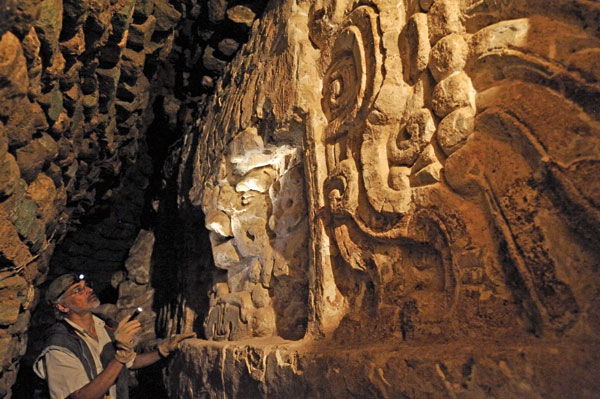
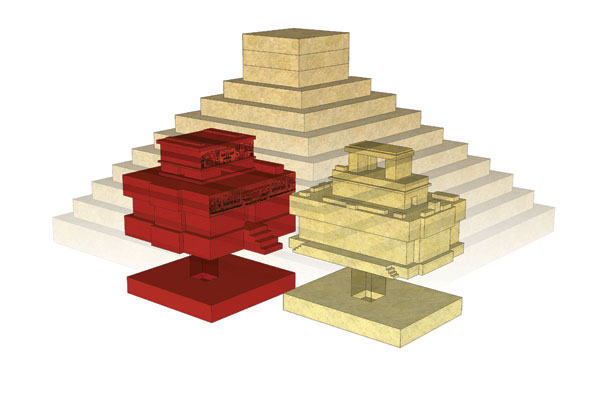
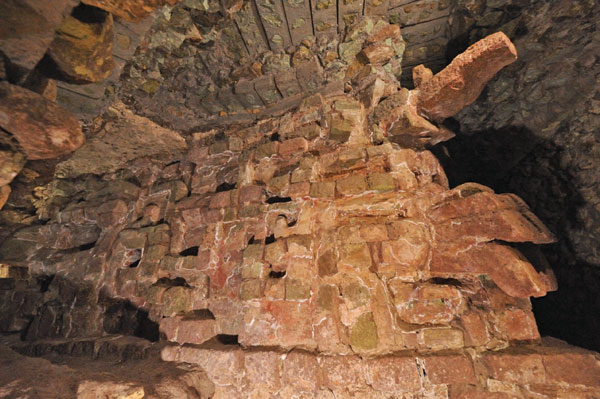





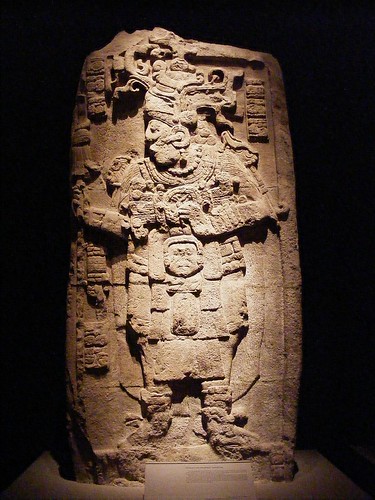


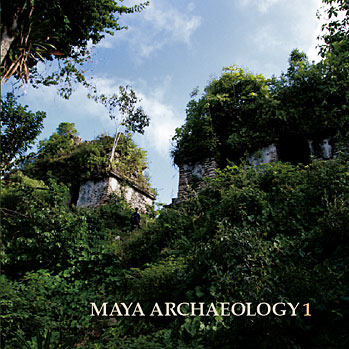









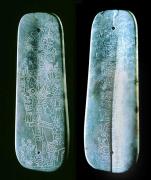
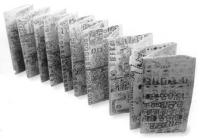

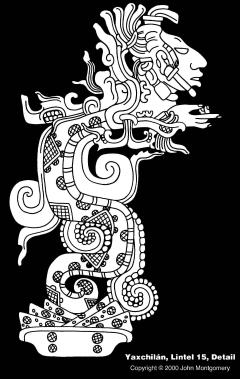

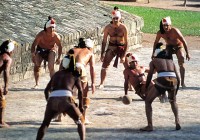


2 Comments:
Hi Erik,
Thanks so much for the review. There were a few reports that I missed.
Best,
Carl
This is nice information blog. Thanks for Sharing.
Post a Comment
<< Home